Ensure inclusive and equitable quality education and promote lifelong learning opportunities for all


Related Topics
Targets and indicators, progress and info.
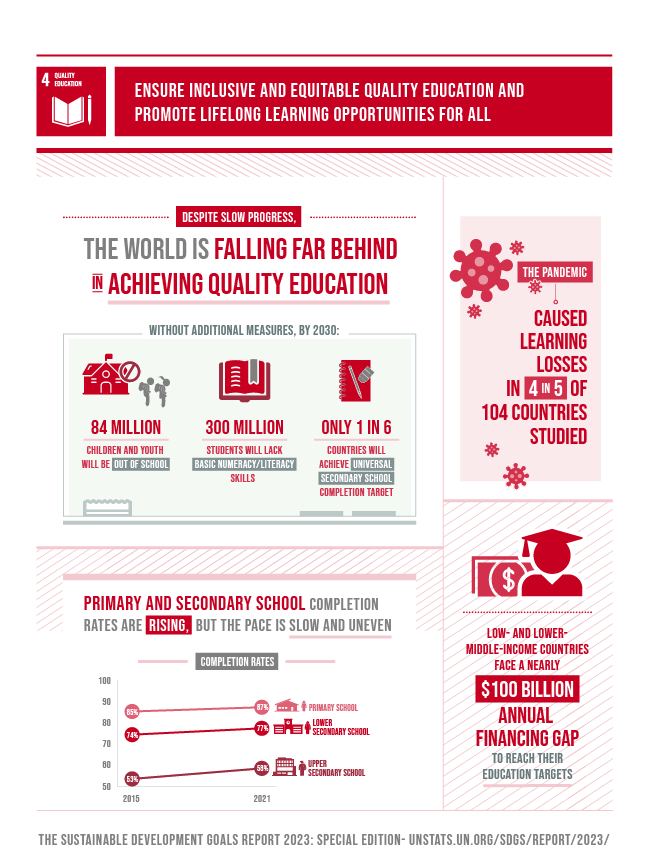
By 2030, ensure that all girls and boys complete free, equitable and quality primary and secondary education leading to relevant and effective learning outcomes
Proportion of children and young people ( a ) in grades 2/3; ( b ) at the end of primary; and ( c ) at the end of lower secondary achieving at least a minimum proficiency level in (i) reading and (ii) mathematics, by sex
Completion rate (primary education, lower secondary education, upper secondary education)
By 2030, ensure that all girls and boys have access to quality early childhood development, care and pre-primary education so that they are ready for primary education
Proportion of children aged 24–59 months who are developmentally on track in health, learning and psychosocial well-being, by sex
Participation rate in organized learning (one year before the official primary entry age), by sex
By 2030, ensure equal access for all women and men to affordable and quality technical, vocational and tertiary education, including university
Participation rate of youth and adults in formal and non-formal education and training in the previous 12 months, by sex
By 2030, substantially increase the number of youth and adults who have relevant skills, including technical and vocational skills, for employment, decent jobs and entrepreneurship
Proportion of youth and adults with information and communications technology (ICT) skills, by type of skill
By 2030, eliminate gender disparities in education and ensure equal access to all levels of education and vocational training for the vulnerable, including persons with disabilities, indigenous peoples and children in vulnerable situations
Parity indices (female/male, rural/urban, bottom/top wealth quintile and others such as disability status, indigenous peoples and conflict-affected, as data become available) for all education indicators on this list that can be disaggregated
By 2030, ensure that all youth and a substantial proportion of adults, both men and women, achieve literacy and numeracy
Proportion of population in a given age group achieving at least a fixed level of proficiency in functional ( a ) literacy and ( b ) numeracy skills, by sex
By 2030, ensure that all learners acquire the knowledge and skills needed to promote sustainable development, including, among others, through education for sustainable development and sustainable lifestyles, human rights, gender equality, promotion of a culture of peace and non-violence, global citizenship and appreciation of cultural diversity and of culture’s contribution to sustainable development
Extent to which (i) global citizenship education and (ii) education for sustainable development are mainstreamed in ( a ) national education policies; ( b ) curricula; ( c ) teacher education and ( d ) student assessment
Build and upgrade education facilities that are child, disability and gender sensitive and provide safe, non-violent, inclusive and effective learning environments for all
Proportion of schools offering basic services, by type of service
By 2020, substantially expand globally the number of scholarships available to developing countries, in particular least developed countries, small island developing States and African countries, for enrolment in higher education, including vocational training and information and communications technology, technical, engineering and scientific programmes, in developed countries and other developing countries
Volume of official development assistance flows for scholarships by sector and type of study
By 2030, substantially increase the supply of qualified teachers, including through international cooperation for teacher training in developing countries, especially least developed countries and small island developing States
Proportion of teachers with the minimum required qualifications, by education level
SDG4 is a key enabler of most other SDGs. Unfortunately, global progress in education has not been fast enough. Only 58% of students worldwide achieved at least the minimum proficiency level in reading at the end of primary schooling in 2019. A large share of countries is moving backwards in learning outcomes at the end of lower secondary school. Improvement in upper secondary completion rate has slowed since 2015. Some regions, including sub-Saharan Africa, are facing teacher shortages, high student-teacher ratios, and inadequate training and lack of professional development opportunities for teachers. Accelerating progress towards SDG 4 should be prioritized as it will have a catalytic impact on achieving the overall 2030 Agenda.
Target 4.1: Completion rates in primary and lower secondary level education continue on an upward curve while the percentage of young people completing upper secondary school increased from 53% in 2015 to 59% in 2023. This increase, however is at a slower pace relative to progress in the preceding eight [1] year period and such improvements do not always result in positive learning outcomes. Between 2018 and 2022, based on learning outcomes at the end of lower secondary school across 81 OECD and partner countries, mean performance in mathematics fell by a record 15 points while in reading fell 10 points. However, reading and mathematics scores had been declining for these countries prior to 2015, suggesting that COVID-19 explains only part of the decline. A complex set of factors affect the education systems of upper-middle [1] income and high-income countries.
Target 4.2: Data from 76 mainly low- and middle-income countries from 2015 to 2023 shows that approximately two-thirds of young children are developmentally on track, with no significant gender differences. However, there are wide variations among countries and regions. In 2022, globally, 7 out of 10 children participated in organized learning one year before reaching official primary school age. Despite a 1.5 percentage point decline during the COVID-19 pandemic, participation levels have started to recover and return to pre-pandemic levels.
Target 4.3: In countries with recent data, around one-sixth of individuals aged 15-64 have participated in education and training. Participation is significantly higher among youth aged 15-24 compared to those aged 24-55, with an average participation rate of nearly 50% across most regions. However, less than 3% of older adults aged 25-55 engage in education and training in most regions.
Target 4.5: Socioeconomic disparities are prevalent in education, affecting various indicators. Global and regional parity ratios may hide gender inequalities within countries, disadvantaging either girls or boys. Disparities based on location or household wealth are more pronounced, with rural or less affluent families facing greater challenges. These gaps widen at higher education levels, leading to increased dropout rates and fewer opportunities for those from disadvantaged backgrounds.
Target 4.a: Only half of all primary schools have the basic infrastructures and materials to provide an adequate schooling experience to pupils with disabilities and one in five primary schools globally does not have single-sex sanitation facilities. On average, 44% of primary schools, 56% of lower secondary schools and 69% of upper secondary schools had access to Internet in 2022, almost double the rates in 2021. At the upper secondary level, 91% of schools have access to electricity, 81% have computers for pedagogical use and 69% of schools are connected to the internet.
Even before the COVID-19 pandemic, the world was already off-track to achieve its education targets. If no additional measures are taken, only one in six countries will meet SDG4 and achieve universal access to quality education by 2030. An estimated 84 million children and young people will still be out of school and an estimated 300 million student will still not have the basic numeracy and literacy skills they need to succeed in life. To deliver SDG4, education systems must be re-imagined, and education financing must become a priority national investment.
Target 4.1: Between 2015 and 2021, the school completion rate increased from 85% to 87% in primary, from 74% to 77% in lower secondary and from 54% in 2015 to 58% in upper secondary education. Even before the onset of COVID19, these rates had slowed down relative to progress in 2010–15. Looking closely at reading levels at the end of primary school, for which trend data cover 34% of the world’s children, the analysis shows that global learning levels showed no progress between 2015-2019. Furthermore, learning losses due to COVID-related school closures have been documented in 4 out of 5 of the 104 countries that have carried out such studies.
Target 4.2: Participation rate in organized learning one year before the official primary entry age has stagnated at around 75% since 2015, still far from the target of ensuring that all girls and boys have access to quality pre-primary education by 2030.
Target 4.3: Among 131 countries with data from 2017 onwards, on average approximately one in six youth and adults aged 15-64 recently participated in formal or non-formal education and training. Participation is substantially higher among youth aged 15-24 (40%-50%), compared to those aged 25-55 (only 5% for most regions).
Target 4.a: Basic school infrastructure is far from universal. In 2020, approximately a quarter of primary schools globally do not have access to basic services such as electricity, drinking water and basic sanitation facilities. For other facilities such as computer facilities and the provision of disability adapted infrastructure, figures are substantially lower, with around 50% of primary schools with access.
Target 4.c: Globally, in 2020, over 14% of teachers are still not qualified according to national norms, with little improvement since 2015.
The COVID-19 outbreak has caused a global education crisis. Most education systems in the world have been severely affected by education disruptions and have faced unprecedented challenges. School closures brought on by the pandemic have had devastating consequences for children’s learning and well-being. It is estimated that 147 million children missed more than half of their in-class instruction over the past two years. This generation of children could lose a combined total of $17 trillion in lifetime earnings in present value. School closures have affected girls, children from disadvantaged backgrounds, those living in rural areas, children with disabilities and children from ethnic minorities more than their peers.
The proportion of young people completing upper secondary school increased from 54 per cent in 2015 to 58 per cent in 2020, with completion slowing down relative to progress in the preceding five-year period. It is too early to predict the effect of the COVID-19 pandemic on completion. Early indications from low-income countries based on phone surveys point to a small decline in attendance upon a return to school but a larger increase in repetition, which may increase dropout rates in coming years.
Data from 73 (mostly low- and middle-income) countries for the period of 2013-2021, indicate that about 7 in 10 children 3 and 4 years of age are developmentally on track, with no significant differences by child’s sex.
The participation rate in organized learning one year before the official primary entry age rose steadily in the years before the COVID-19 pandemic, from 69 per cent in 2010 to 75 per cent in 2020 but with considerable variation between countries (with the rate ranging from a figure as low as 13 per cent to nearly 100 per cent). This progress is being threatened by the COVID-19 pandemic, as schoolchildren in early childhood education and the early grades, especially from low- and middle-income countries, are the most affected by education disruption. In most countries, early education facilities and schools were partially or fully closed for more than a full school year.
Based on data for 2016-2018, the participation rate of youth and adults in formal and non-formal education and training in the previous 12 months among countries of sub-Saharan Africa with data is typically about 5 per cent or less compared with a rate of over 40 per cent in Northern American and many European countries.
Insufficient skills are often mentioned as an impediment to effective information and communications technology use. Based on data for 2017-2020, in only 10 per cent of countries could more than 70 per cent of individuals carry out one of the activities that compose basic skills in the last three months such as sending an email with an attachment. In only 15 per cent of countries do more than 40 per cent of people have standard skills such as creating an electronic presentation using presentation software.
Despite improvements, disparities in educational participation and outcomes are persistent. Gender inequalities remain for many indicators. For example, most countries with data have not achieved gender parity in the proportion of children meeting minimum learning proficiency standards in reading, and in the lower secondary completion rate. For the lower secondary completion rate, only one sixth of countries with data had parity between rural and urban areas and almost no countries achieved parity between children of the richest households and children of the poorest.
Basic school infrastructure is far from universal. In 2020, approximately one quarter of primary schools globally did not have access to basic services such as electricity, drinking water and basic sanitation facilities. Figures are substantially lower for other facilities such as information and communications technology and disability-adapted infrastructure, with about 50 per cent of primary schools having such access. Shares among least developed countries tend to be substantially lower, ranging from approximately one half to two-thirds of the global average. During the global pandemic, schools in comparatively disadvantaged areas were less equipped to keep children and staff safe.
In 2020, there were about 12 million pre-primary school teachers, 33 million primary school teachers and 38 million secondary school teachers working in classrooms around the world, and 83 per cent of primary and secondary school teachers were trained.
Source: Progress Towards the Sustainable Development Goals- Report of the Secretary-General
For more information, please, check: https://unstats.un.org/sdgs/report/2022/
The impact of the COVID-19 pandemic on schooling is a “generational catastrophe”. Before the pandemic, progress was already slow and insufficient to achieve the education targets in the Goals. School closures caused by the pandemic have had devastating consequences for children’s learning and well-being. Hundreds of millions of children and young people are falling behind in their learning, which will have long-term impacts. One year into the COVID-19 crisis, two thirds of students worldwide are still affected by full or partial school closures. The most vulnerable children and those unable to access remote learning are at increased risk of never returning to school and of being forced into child marriage or child labour.
It is estimated that 101 million additional children and young people (from grades 1 to 8) fell below the minimum reading proficiency level in 2020 owing to the consequences of the pandemic, which wiped out the education gains achieved over the past 20 years. Reading proficiency levels could recover by 2024, but only if exceptional efforts are devoted to the task through remedial and catch-up strategies.
Just before the pandemic, 53 per cent of young people were completing secondary school globally, although the figure for sub-Saharan Africa was only 29 per cent. The rise in school completion rates may slow or even reverse depending on the duration of school closures, which are resulting in learning losses and affecting the motivation to attend school, and on the extent to which poverty might increase, adding to the obstacles faced by disadvantaged children.
Data from before the pandemic for 76 mostly low- and middle-income countries and territories covering the period 2012–2020 indicate that 7 in 10 children who are 3 and 4 years of age are on track developmentally, with no significant differences between the sexes. However, many young children are unable to attend early education because of the pandemic and so are now entirely reliant on their caregivers for nurturing care. Unsafe conditions, negative interactions with caregivers and a lack of educational opportunities during the early years can lead to irreversible outcomes, affecting children’s potential for the remainder of their lives.
The rate of participation in organized learning one year before the official age of entry into primary education rose steadily in the years before the pandemic, from 65 per cent in 2010 to 73 per cent in 2019, but with variation among countries and territories ranging from 12 per cent to nearly 100 per cent. Gender parity has been achieved in every region. The progress made over past years has been at risk since 2020 because early education facilities and primary schools closed in most countries and territories, preventing or limiting access to education, especially for children from low- and middle-income countries and territories.
Disparities in access to education and learning outcomes persist across a range of education indicators. For example, there were still only 92 literate women and girls 15 years of age or older for every 100 literate boys and men of the same ag e range in 2019. Almost half of countries and territories with recent data did not achieve gender parity in primary completion, and only a handful of countries and territories demonstrate parity in tertiary enrolment ratios. Disparities by urban/rural geographical location and household wealth are typically more extreme, with one third and one sixth of countries and territories achieving parity in primary completion, respectively, and no countries or territories with recent data achieving parity in tertiary attendance. The pandemic is expected to lead to a reversal in recent progress towards equity. With the shift towards remote learning, those from the poorest households and other vulnerable groups are less equipped to participate and more likely to drop out permanently or for extended periods.
According to data for the period from 2017 to 2019, more than one fifth of primary schools worldwide do not have access to basic drinking water, and more than one third lack basic handwashing facilities. In the least developed countries, more than two thirds of primary schools do not have access to electricity, with even lower rates of Internet access and computer availability for pedagogical purposes in schools.
ODA for scholarships amounted to $1.7 billion in 2019, up from $1.3 billion in 2017. The European Union, France, Japan, Saudi Arabia and Turkey accounted for 55 per cent of this total.
In 2019, 81 per cent of primary school teachers were trained, although that proportion was lower in sub-Saharan Africa (65 per cent) and Southern Asia (74 per cent). With the unprecedented lockdown as a result of the pandemic leading to total or partial school closures in most countries and territories, the teaching workforce was severely affected.
Source: Progress towards the Sustainable Development Goals - E/2021/58
At the end of 2019, millions of children and young people were still out of school, and more than half of those in school were not meeting minimum proficiency standards in reading and numeracy. The closure of schools to slow the spread of COVID-19 is having an adverse impact on learning outcomes and the social and behavioural development of children and young people. It has affected more than 90 per cent of the world’s student population, 1.5 billion children and young people. Although remote learning is provided to many students, children and young people in vulnerable and disadvantaged communities, such as those living in remote areas, extreme poverty, fragile states and refugee camps, do not have the same access thereto. The digital divide will widen existing gaps in equality with regard to education.
In 74 countries with comparable data for the 2011–2019 period, around 7 in 10 children 3 and 4 years of age were on track developmentally in at least three of the following domains: literacy-numeracy, physical development, social-emotional development and learning.
Participation in organized learning one year before the official primary age of entry grew steadily, from 62 per cent in 2010 to 67 per cent in 2018. However, variation among countries is still wide, with values ranging from 9 to nearly 100 per cent.
The primary school completion rate reached 84 per cent in 2018, up from 70 per cent in 2000. Under current trends, the rate is expected to reach 89 per cent globally by 2030. In 2018, 258 million children, adolescents and young people 6 to 17 years of age were still out of school, representing 17 per cent of the global population of that age group. Parity between children or adolescents from the richest and poorest quintiles of the population was achieved in 25 per cent of countries for primary education, 21 per cent of countries for lower secondary education and only 1 per cent of countries for upper secondary education.
In 2018, some 773 million adults, two thirds of them women, remained illiterate in terms of reading and writing skills. The global adult literacy rate, for the population 15 years of age and older, was 86 per cent in 2018, while the youth literacy rate, for the population 15 to 24 years of age, was 92 per cent. Southern Asia is home to nearly half of the global illiterate population, and sub-Saharan Africa is home to one quarter thereof.
In 2019, less than one half of primary and lower secondary schools in subSaharan Africa had access to electricity, the Internet, computers and basic handwashing facilities, key basic services and facilities necessary to ensure a safe and effective learning environment for all students.
ODA for scholarships amounted to $1.6 billion in 2018, up from $1.3 billion in 2017.
Based on data from 129 countries, the percentage of primary school teachers receiving the minimum pedagogical training according to national standards throughout the world has stagnated at 85 per cent since 2015. The percentage is lowest in sub-Saharan Africa (64 per cent) and Southern Asia (72 per cent).
Source: Progress towards the Sustainable Development Goals, Report of the Secretary-General, https://undocs.org/en/E/2020/57
Despite the considerable progress on education access and participation over the past years, 262 million children and youth aged 6 to 17 were still out of school in 2017, and more than half of children and adolescents are not meeting minimum proficiency standards in reading and mathematics. Rapid technological changes present opportunities and challenges, but the learning environment, the capacities of teachers and the quality of education have not kept pace. Refocused efforts are needed to improve learning outcomes for the full life cycle, especially for women, girls and marginalized people in vulnerable settings.
- In 72 countries with recent data, approximately 7 in 10 children aged 3 and 4 were developmentally on track in at least three of the following domains: literacy-numeracy, physical development, social-emotional development and learning.
- In 2015, an estimated 617 million children and adolescents of primary and lower secondary school age worldwide – more than 50 per cent – were not achieving minimum proficiency levels in reading and mathematics. Of these, about two thirds were attending school but were not learning in the classroom, or dropped out school.
- Some 750 million adults – two thirds of them women – remained illiterate in 2016. Half of the global illiterate population lives in South Asia, and a quarter live in sub-Saharan Africa.
- Many developing countries still lack basic infrastructure and facilities to provide effective learning environments. Sub-Saharan Africa faces the biggest challenges: at the primary and lower secondary levels, less than half of schools have access to electricity, the Internet, computers and basic drinking water.
- ODA for scholarships amounted to $1.3 billion in 2017. Australia, France, Japan, the United Kingdom of Great Britain and Northern Ireland and institutions of the European Union accounted for nearly two thirds of this total.
- Globally, there has been little progress in the percentage of primary school teachers who are trained: it has been stagnating at about 85 per cent since 2015. The proportion is lowest in sub-Saharan Africa (64 per cent).
Source: Report of the Secretary-General, Special edition: progress towards the Sustainable Development Goals
More than half of children and adolescents worldwide are not meeting minimum proficiency standards in reading and mathematics. Refocused efforts are needed to improve the quality of education. Disparities in education along the lines of gender, urban-rural location and other dimensions still run deep, and more investments in education infrastructure are required, particularly in LDCs.
- At the global level, the participation rate in early childhood and primary education was 70 per cent in 2016, up from 63 per cent in 2010. The lowest rates are found in sub-Saharan Africa (41 per cent) and Northern Africa and Western Asia (52 per cent).
- An estimated 617 million children and adolescents of primary and lower secondary school age worldwide—58 per cent of that age group—are not achieving minimum proficiency in reading and mathematics.
- In 2016, an estimated 85 per cent of primary school teachers worldwide were trained; the proportion was only 71 per cent for Southern Asia and 61 per cent for sub-Saharan Africa
- In 2016, only 34 per cent of primary schools in LDCs had electricity and less than 40 per cent were equipped with basic handwashing facilities.
Source: Report of the Secretary-General, The Sustainable Development Goals Report 2018
Achieving inclusive and equitable quality education for all will require increasing efforts, especially in sub-Saharan Africa and Southern Asia and for vulnerable populations, including persons with disabilities, indigenous people, refugee children and poor children in rural areas.
- In 2014, about 2 in 3 children worldwide participated in pre-primary or primary education in the year prior to official entry age for primary school. However, in the least developed countries, the ratio was only 4 in 10.
- Despite considerable gains in education enrolment over the past 15 years, worldwide, the adjusted net enrolment rates were 91 per cent for primary education, 84 per cent for lower secondary education and 63 per cent for upper secondary education in 2014. About 263 million children and youth were out of school, including 61 million children of primary school age. Sub-Saharan Africa and Southern Asia account for over 70 per cent of the global out-ofschool population in primary and secondary education.
- Even though more children than ever are going to school, many do not acquire basic skills in reading and mathematics. Recent learning assessment studies show that in 9 of 24 sub-Saharan African countries and 6 of 15 Latin American countries with data, fewer than half of the students at the end of primary education had attained minimum proficiency levels in mathematics. In 6 of 24 sub-Saharan African countries with data, fewer than half of the students who finished their primary schooling had attained minimum proficiency levels in reading.
- Equity issues constitute a major challenge in education according to a recent assessment. In all countries with data, children from the richest 20 per cent of households achieved greater proficiency in reading at the end of their primary and lower secondary education than children from the poorest 20 per cent of households. In most countries with data, urban children scored higher in reading than rural children.
- The lack of trained teachers and the poor condition of schools in many parts of the world are jeopardizing prospects for quality education for all. Sub -Saharan Africa has a relatively low percentage of trained teachers in pre -primary, primary and secondary education (44 per cent, 74 per cent and 55 per cent, respectively). Moreover, the majority of schools in the region do not have access to electricity or potable water.
- On the basis of data from 65 developing countries, the average percentage of schools with access to computers and the Internet for teaching purposes is above 60 per cent in both primary and secondary education. However, the share is less than 40 per cent in more than half of sub-Saharan countries with data.
- Official development assistance (ODA) for scholarships amounted to $1 billion in 2015, a decrease from $1.2 billion in 2014. Australia, France and the United Kingdom of Great Britain and Northern Ireland were the largest contributors.
Source: Report of the Secretary-General, "Progress towards the Sustainable Development Goals", E/2017/66
- Despite progress, the world failed to meet the Millennium Development Goal of achieving universal primary education by 2015. In 2013, the latest year for which data are available, 59 million children of primary-school age were out of school. Estimates show that, among those 59 million children, 1 in 5 of those children had dropped out and recent trends suggest that 2 in 5 of out-of-school children will never set foot in a classroom. The Sustainable Development Goals clearly recognize that this gap must be closed, even as the international community more explicitly addresses the challenges of quality and equity.
- Measuring learning achievement, starting in the early grades, will help to identify where schools are failing to meet their commitments to children and to formulate appropriate remedial action. For example, data for 2013 from 15 Latin American countries show that in six countries, fewer than 50 per cent of third graders had a minimum level of proficiency in mathematics; in three countries, fewer than half were proficient in reading.
- At the end of primary school, children should be able to read and write and to understand and use basic concepts in mathematics. However, in 2014, between 40 per cent and 90 per cent of children failed to achieve even minimum levels of proficiency in reading, in 10 African countries, and in nine of those countries, between 40 per cent and 90 per cent of children failed to achieve minimum levels of proficiency in mathematics.
- The end of lower secondary education often coincides with the end of compulsory education. By this stage, young people should be able to master subject-related knowledge and skills and possess personal and social skills. Data from 38 countries in the developed regions show that, in the majority of those countries, at least 75 per cent of young people achieved at least a minimum proficiency in reading and/or mathematics; the same was true for only 5 out of 22 countries, in developing regions, for which data were available.
- Completion rates for both primary and lower secondary education has been rising steadily since 2000. Completion rates for primary education in both developed and developing regions exceeded 90 per cent in 2013. At the lower secondary level, the gap between developed and developing regions has narrowed substantially, but still stood at nearly 20 percentage points in 2013 (91 per cent for developed regions and 72 per cent for developing regions).
- Quality early education provides children with basic cognitive and language skills and fosters emotional development. In the majority of the 58 countries with available data for the period 2009-2015, more than half of children between the ages of 3 and 4 were developmentally on track in at least three of the following domains: literacy, numeracy, physical development, social-emotional development and learning.
- Goal 4 strongly supports the reduction of persistent disparities. Worldwide, in 2013, two thirds of the 757 million adults (aged 15 and over) who were unable to read and write were women. Globally, in 2013, 1 in 10 girls were out of school, compared to 1 in 12 boys. Children from the poorest 20 per cent of households are nearly four times more likely to be out of school than their richest peers. Out-of-school rates are also higher in rural areas and among children from households headed by someone with less than a primary education.
- To fulfil the promise of universal primary and secondary education, new primary school teachers are needed, with current estimates showing a need for nearly 26 million of them by 2030. Africa faces the greatest challenges in this regard, with nearly 7 in 10 countries experiencing acute shortages of trained primary school teachers. In 2013, only 71 per cent of teachers in sub-Saharan Africa and 84 per cent in Northern Africa were trained in accordance with national standards.
- Official development assistance for educational scholarships amounted to around $1.1 billion annually from 2011 to 2013. It totalled $1.2 billion in 2014, with Australia, France and Japan being the largest contributors.
Source: Report of the Secretary-General, "Progress towards the Sustainable Development Goals", E/2016/75
2025 ECOSOC Partnership Forum
Closing the ambition gap: fostering synergies between climate action and sdgs, synergy solutions: overcoming silos and policy incoherence to close the climate & sdgs ambition gap, roundtable dialogue on the side of 2024 hlpf on “south-south and triangular cooperation for building regional capacities for science, technology, and innovation (sti)”, july 16, 12:30 – 2:30 pm, publications, synergy solutions for climate and sdg action: bridging the ambition gap for the future we want, synergy solutions for a world in crisis: tackling climate and sdg action together, third global conference on strengthening synergies between the paris agreement and the 2030 agenda for sustainable development, sdg good practices-a compilation of success stories and lessons learned in sdg implementation (first edition).
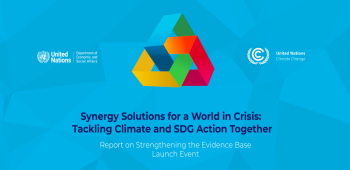
Governments must seek win-win synergies by tackling climate and sustainable development crises together, urges expert group report

Expert Group to Prepare Report Analysing Climate and SDG Synergies, Aiming to Maximize Action Impact
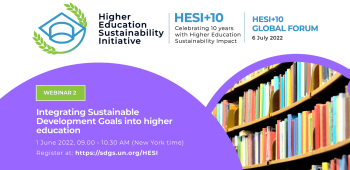
The Higher Education Sustainability Initiative discusses integrating the Sustainable Development Goals into Higher Education

- Progress towards quality education was already slower than required before the pandemic, but COVID-19 has had devastating impacts on education, causing learning losses in four out of five of the 104 countries studied.
Without additional measures, an estimated 84 million children and young people will stay out of school by 2030 and approximately 300 million students will lack the basic numeracy and literacy skills necessary for success in life.
In addition to free primary and secondary schooling for all boys and girls by 2030, the aim is to provide equal access to affordable vocational training, eliminate gender and wealth disparities, and achieve universal access to quality higher education.
Education is the key that will allow many other Sustainable Development Goals (SDGs) to be achieved. When people are able to get quality education they can break from the cycle of poverty.
Education helps to reduce inequalities and to reach gender equality. It also empowers people everywhere to live more healthy and sustainable lives. Education is also crucial to fostering tolerance between people and contributes to more peaceful societies.
- To deliver on Goal 4, education financing must become a national investment priority. Furthermore, measures such as making education free and compulsory, increasing the number of teachers, improving basic school infrastructure and embracing digital transformation are essential.
What progress have we made so far?
While progress has been made towards the 2030 education targets set by the United Nations, continued efforts are required to address persistent challenges and ensure that quality education is accessible to all, leaving no one behind.
Between 2015 and 2021, there was an increase in worldwide primary school completion, lower secondary completion, and upper secondary completion. Nevertheless, the progress made during this period was notably slower compared to the 15 years prior.
What challenges remain?
According to national education targets, the percentage of students attaining basic reading skills by the end of primary school is projected to rise from 51 per cent in 2015 to 67 per cent by 2030. However, an estimated 300 million children and young people will still lack basic numeracy and literacy skills by 2030.
Economic constraints, coupled with issues of learning outcomes and dropout rates, persist in marginalized areas, underscoring the need for continued global commitment to ensuring inclusive and equitable education for all. Low levels of information and communications technology (ICT) skills are also a major barrier to achieving universal and meaningful connectivity.
Where are people struggling the most to have access to education?
Sub-Saharan Africa faces the biggest challenges in providing schools with basic resources. The situation is extreme at the primary and lower secondary levels, where less than one-half of schools in sub-Saharan Africa have access to drinking water, electricity, computers and the Internet.
Inequalities will also worsen unless the digital divide – the gap between under-connected and highly digitalized countries – is not addressed .
Are there groups that have more difficult access to education?
Yes, women and girls are one of these groups. About 40 per cent of countries have not achieved gender parity in primary education. These disadvantages in education also translate into lack of access to skills and limited opportunities in the labour market for young women.
What can we do?
Ask our governments to place education as a priority in both policy and practice. Lobby our governments to make firm commitments to provide free primary school education to all, including vulnerable or marginalized groups.
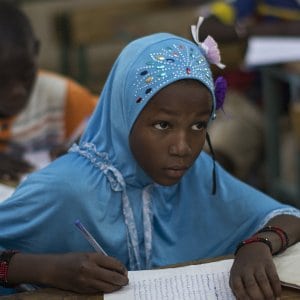

Facts and figures
Goal 4 targets.
- Without additional measures, only one in six countries will achieve the universal secondary school completion target by 2030, an estimated 84 million children and young people will still be out of school, and approximately 300 million students will lack the basic numeracy and literacy skills necessary for success in life.
- To achieve national Goal 4 benchmarks, which are reduced in ambition compared with the original Goal 4 targets, 79 low- and lower-middle- income countries still face an average annual financing gap of $97 billion.
Source: The Sustainable Development Goals Report 2023
4.1 By 2030, ensure that all girls and boys complete free, equitable and quality primary and secondary education leading to relevant and Goal-4 effective learning outcomes
4.2 By 2030, ensure that all girls and boys have access to quality early childhood development, care and preprimary education so that they are ready for primary education
4.3 By 2030, ensure equal access for all women and men to affordable and quality technical, vocational and tertiary education, including university
4.4 By 2030, substantially increase the number of youth and adults who have relevant skills, including technical and vocational skills, for employment, decent jobs and entrepreneurship
4.5 By 2030, eliminate gender disparities in education and ensure equal access to all levels of education and vocational training for the vulnerable, including persons with disabilities, indigenous peoples and children in vulnerable situations
4.6 By 2030, ensure that all youth and a substantial proportion of adults, both men and women, achieve literacy and numeracy
4.7 By 2030, ensure that all learners acquire the knowledge and skills needed to promote sustainable development, including, among others, through education for sustainable development and sustainable lifestyles, human rights, gender equality, promotion of a culture of peace and non-violence, global citizenship and appreciation of cultural diversity and of culture’s contribution to sustainable development
4.A Build and upgrade education facilities that are child, disability and gender sensitive and provide safe, nonviolent, inclusive and effective learning environments for all
4.B By 2020, substantially expand globally the number of scholarships available to developing countries, in particular least developed countries, small island developing States and African countries, for enrolment in higher education, including vocational training and information and communications technology, technical, engineering and scientific programmes, in developed countries and other developing countries
4.C By 2030, substantially increase the supply of qualified teachers, including through international cooperation for teacher training in developing countries, especially least developed countries and small island developing states
UN Educational, Scientific and Cultural Organization
UN Children’s Fund
UN Development Programme
Global Education First Initiative
UN Population Fund: Comprehensive sexuality education
UN Office of the Secretary General’s Envoy on Youth
Fast Facts: Quality Education
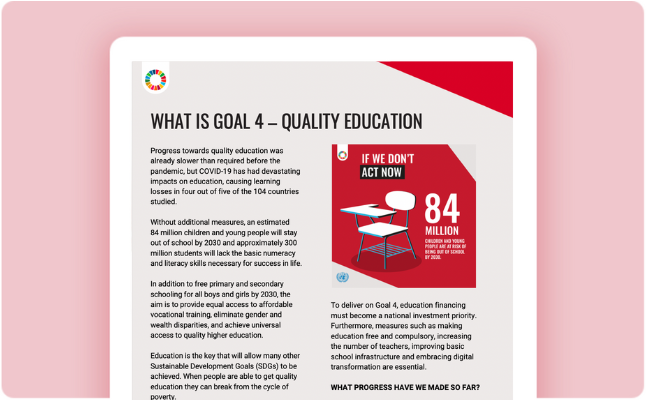
Infographic: Quality Education
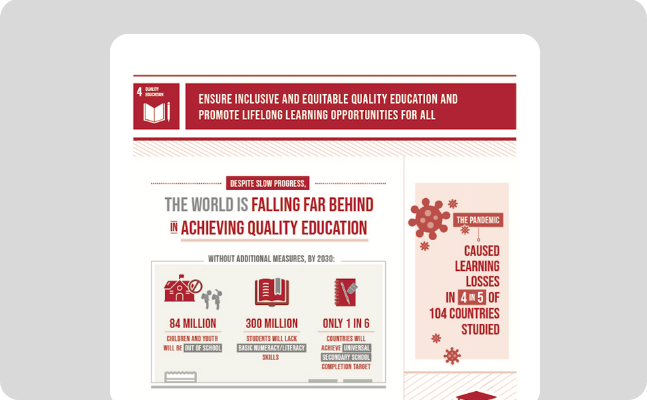
Related news
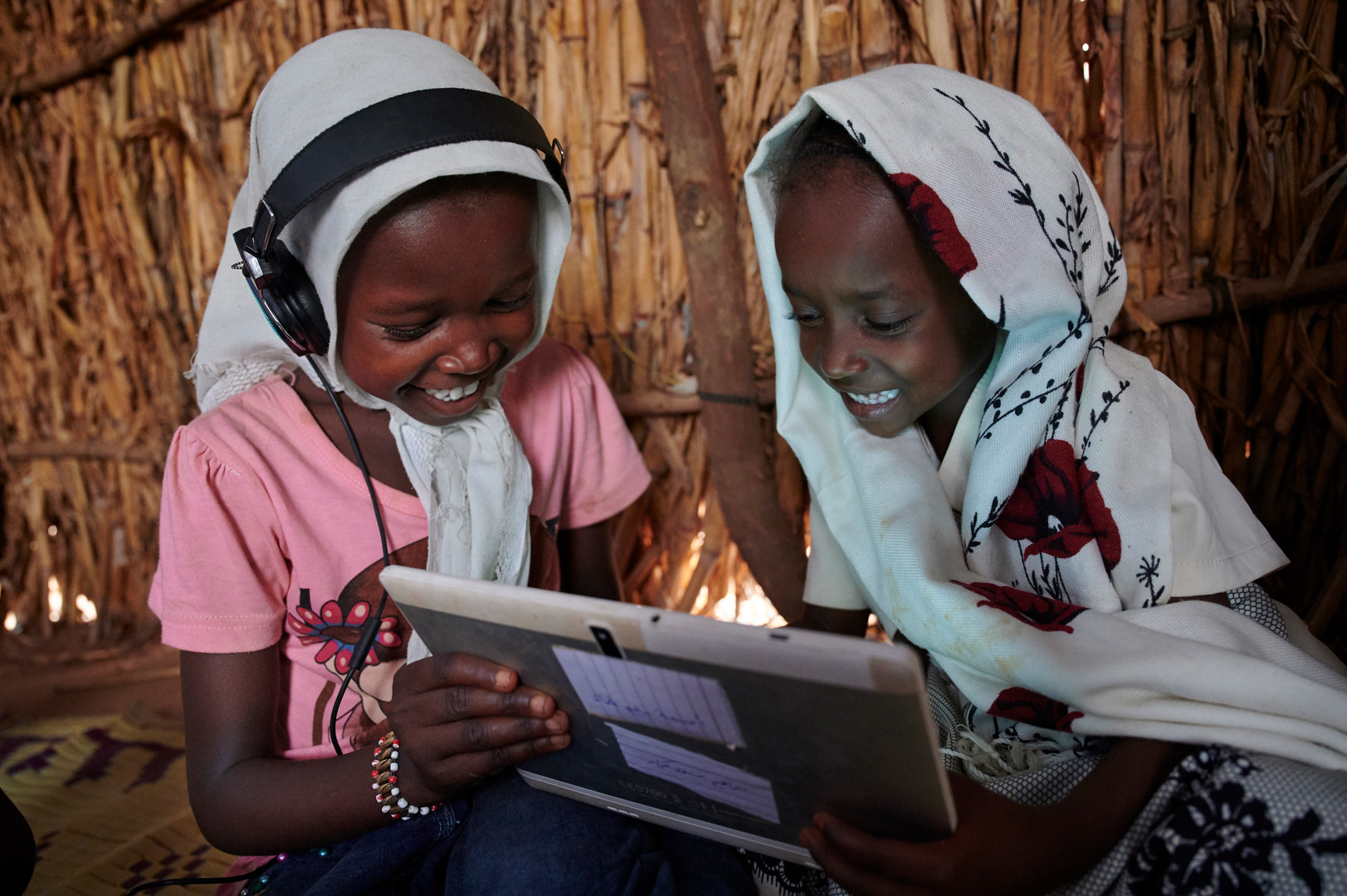
‘Education is a human right,’ UN Summit Adviser says, urging action to tackle ‘crisis of access, learning and relevance’
Masayoshi Suga 2022-09-15T11:50:20-04:00 14 Sep 2022 |
14 September, NEW YORK – Education is a human right - those who are excluded must fight for their right, Leonardo Garnier, Costa Rica’s former education minister, emphasized, ahead of a major United Nations [...]
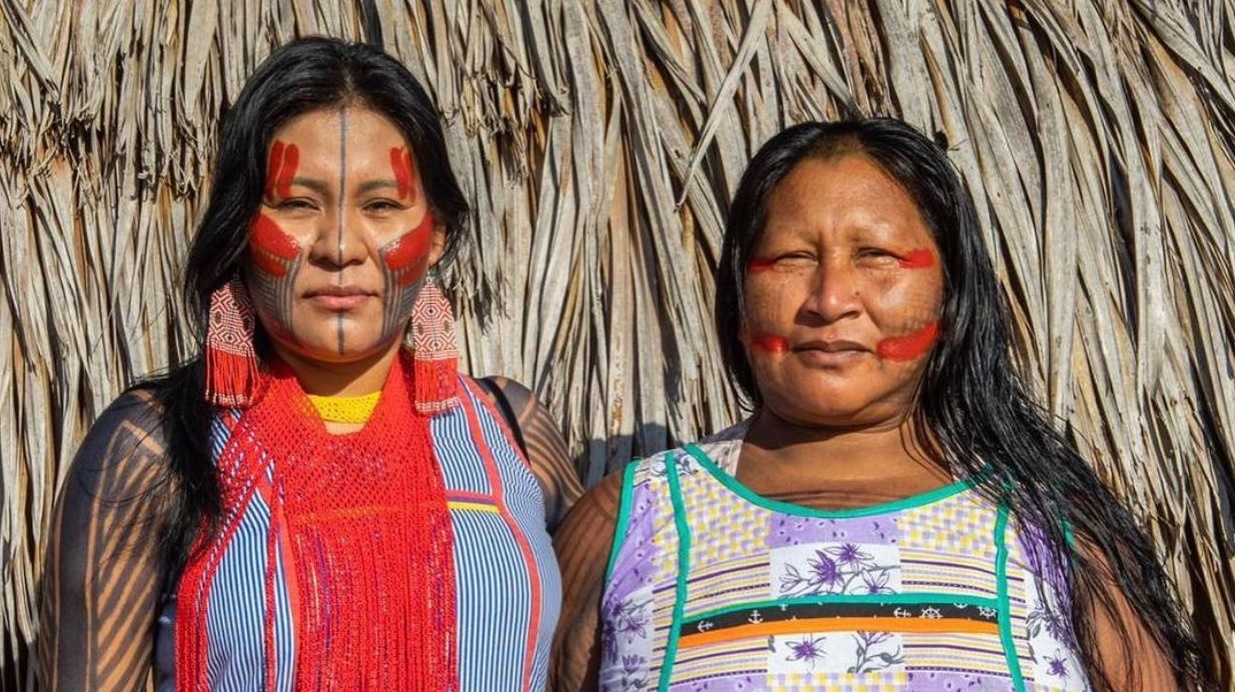
Showcasing nature-based solutions: Meet the UN prize winners
Masayoshi Suga 2022-08-13T22:16:45-04:00 11 Aug 2022 |
NEW YORK, 11 August – The United Nations Development Programme (UNDP) and partners have announced the winners of the 13th Equator Prize, recognizing ten indigenous peoples and local communities from nine countries. The winners, selected from a [...]

UN and partners roll out #LetMeLearn campaign ahead of Education Summit
Yinuo 2022-08-10T09:27:23-04:00 01 Aug 2022 |
New York, 1 August – Amid the education crisis exacerbated by the COVID-19 pandemic, the United Nations is partnering with children's charity Theirworld to launch the #LetMeLearn campaign, urging world leaders to hear the [...]
Related videos
Malala yousafzai (un messenger of peace) on “financing the future: education 2030”.
VIDEO: Climate education at COP22
From the football field to the classrooms of Nepal | UNICEF
Share this story, choose your platform!

IMAGES
VIDEO